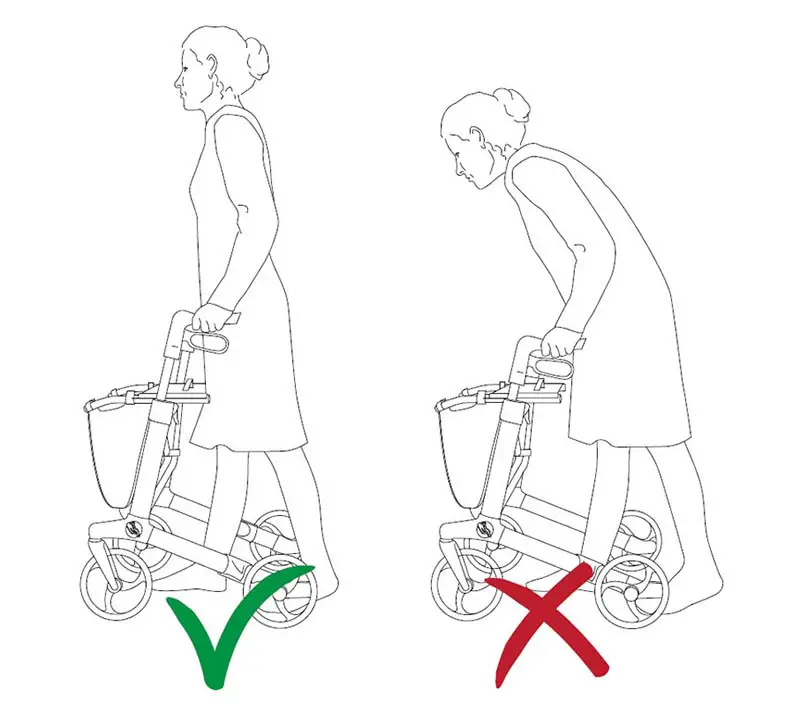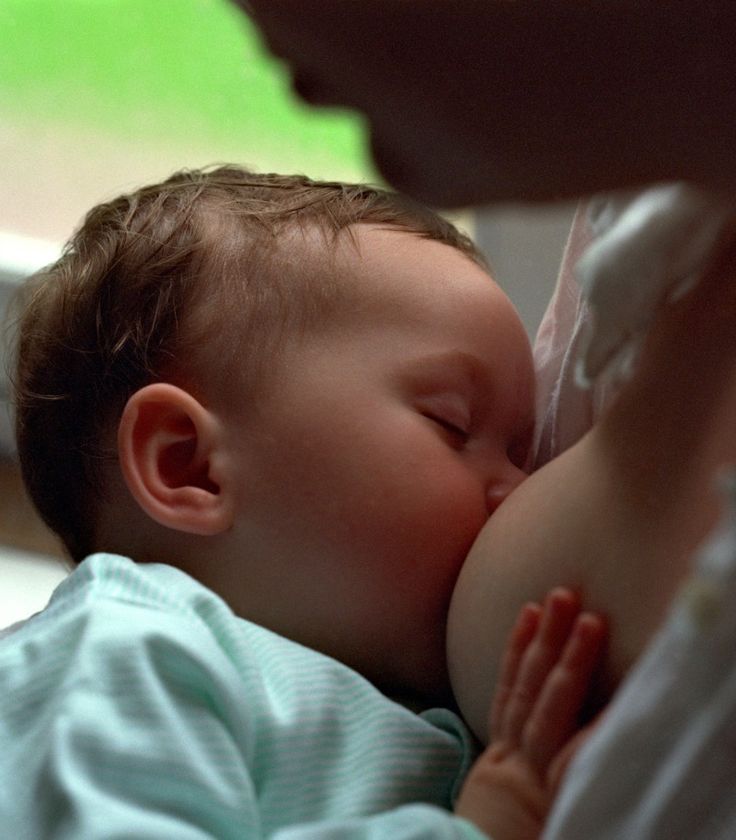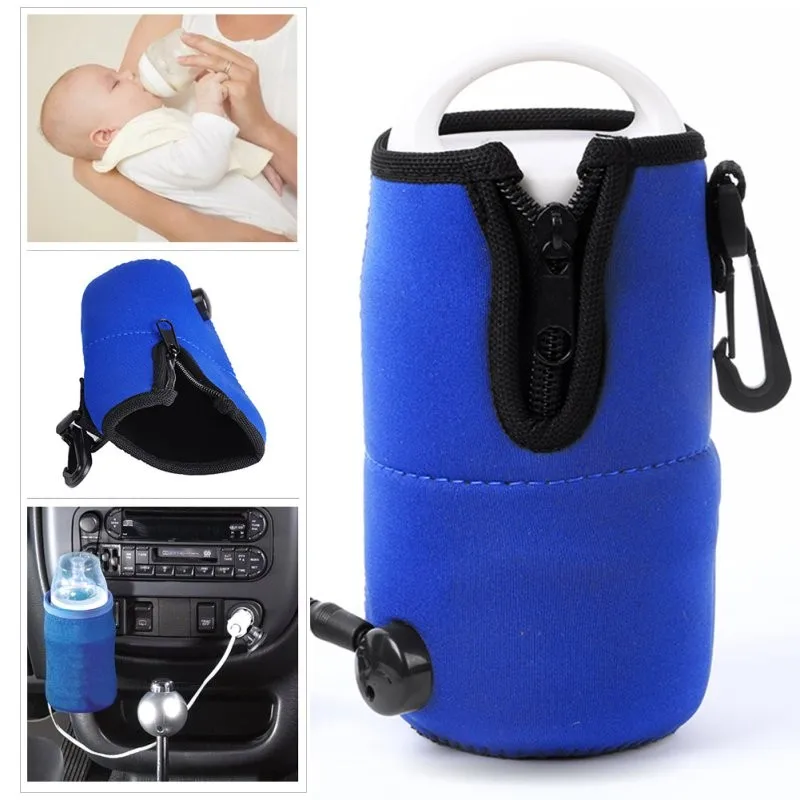Feeding baby cauliflower
Cauliflower For Baby Ways To Cook & Serve (BLW)
Jump to Recipe - Print Recipe
Cauliflower (meaning “cabbage flower”) has been cultivated from wild cabbage and it’s full of nutrients and antioxidants that are essential for our kid’s gut health and immune system. You can definitely add this vegetable to your baby’s diet starting around 8 months – steamed, puréed, mashed, grated, roasted or incorporated infinger foods, it makes a nutritious baby food including for baby led weaning.
What Age Can Baby Have Cauliflower
You can start serving cauliflower to your baby around the age of 7-8 months old. As this cruciferous vegetable is known for causing bloating and gas you should avoid serving it as first food. It’s probably best to wait until your baby’s sensitive gut is more accustomed to insoluble fibers before introducing it.
Every child is different so whenever you choose to start feeding cauliflower to your baby, pay attention if any discomfort occurs.
How To Cut Cauliflower For Baby Led Weaning
- Remove the stalk, then start removing the florets by cutting each cluster from the core, leaving a little of the stem with each cluster.
- Keep larger florets for babies who start baby led weaning at 6-8 months. Once your baby develops teeth and a pincer grasp (typically around 9 months), cut the cauliflower into smaller pieces (florets). They will enjoy picking up smaller finger food.
- Introduce cauliflower rice to your baby at around 12 months when he already knows how to chew and swallow foods. To reduce the chocking hazard help your child bind the individual grains in his mouth by mixing with a sauce or cheese.
Below you’ll find more information about how to cook and serve cauliflower for baby led weaning.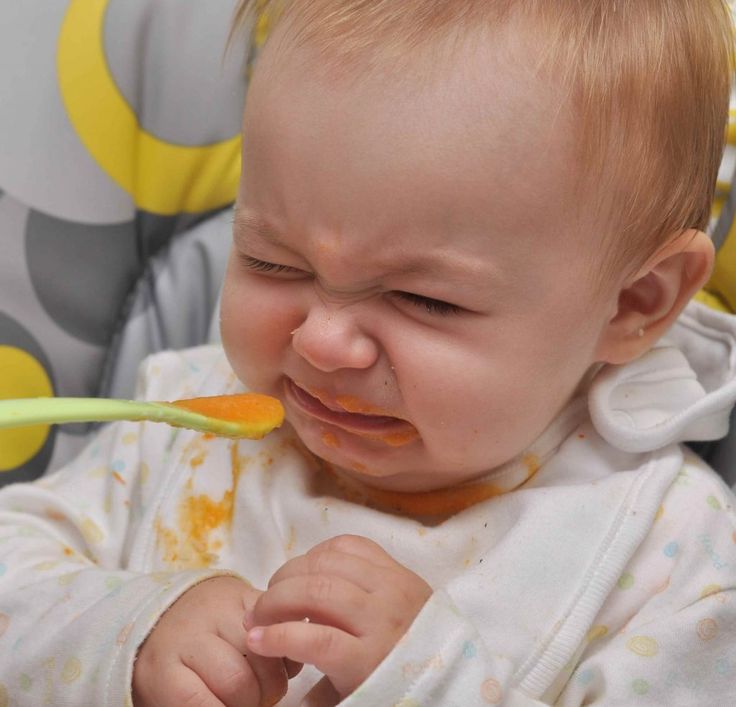
How To Cook Cauliflower For Baby (BLW) & Toddlers
Cauliflower whether is purple, yellow or orange is one of the world’s most nutrient-dense vegetables and it needs proper temperature and cooking time in order to preserve as much as possible of those nutrients.
TIP: High-temperature cooking practices such as boiling, frying and high-power microwave processing can degrade the bioavailability of cauliflower’s beneficial compounds. If you want to minimize the cauliflower’s odor while retaining the nutrient content, cook the cauliflower for only a short time like 10-13 minutes. And choose methods that require a small amount of water.
Some common methods of cooking cauliflower are steaming, roasting, sautéing, and boiling.
Here are the best ways you can cook cauliflower for you baby:Steaming Cauliflower For Baby
Steaming the cauliflower is one of the best way of preserving its nutrients, due to less contact with water and short time of cooking.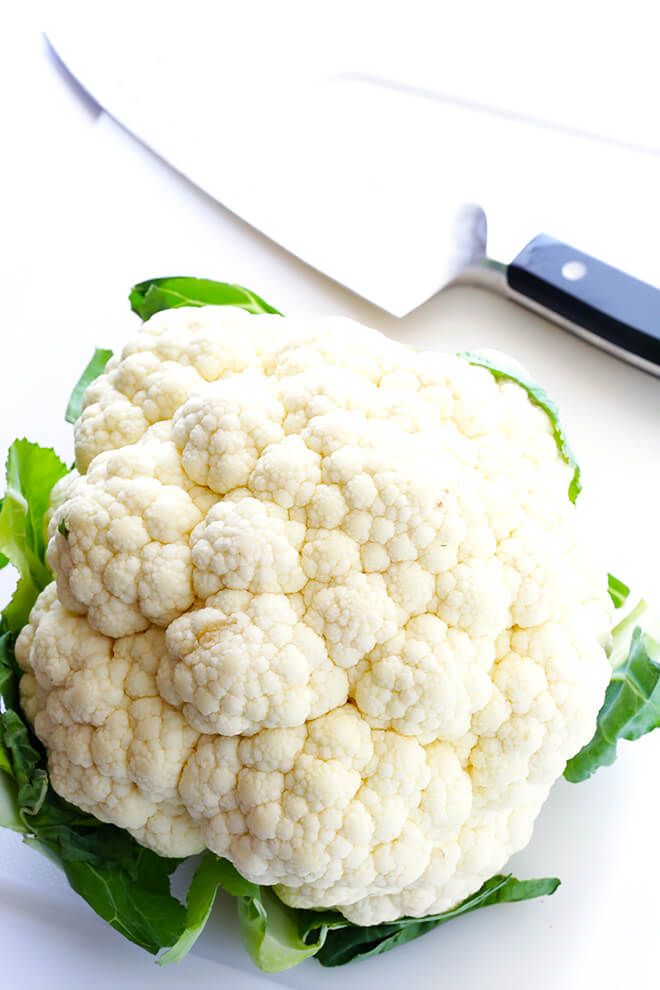 Here is how to do it:
Here is how to do it:
- Add enough water to a pot and bring to a boil ( it should not touch the steamer basket when it is placed in the pot).
- Place the steamer basket with cauliflower pieces over the pot. Cover and cook for 6 to 8 minutes or until tender when pierced with a fork. Cooking time will depend on the size of the florets.
How To Roast Cauliflower For Baby (As Finger Food)
The remarkable taste of roasted cauliflower comes as a result of caramelization in the oven. Here’s how to roast cauliflower to get the perfect texture and taste:
- Cut cauliflower into florets. You can keep larger florets for younger babies (6-8 months) or you can cut them down further by cutting each cluster into smaller uniform size pieces. These are perfect as finger food for babies 9 months and older.
- Place the cauliflower on a baking sheet in a single layer.

3. Drizzle some oil on top and season with sea salt and black pepper (for older kids).
4. Roast cauliflower in the preheated oven at 425F / 220C, for 35-40 minutes.
Boiling Cauliflower For Baby
Boiling the cauliflower usually is the least preferred method if you need to serve just plain soft cauliflower florets. The most nutrients will leach into the boiling water that you will likely discard. To be more exact, half of nutrients are lost when it is boiled for only 10 minutes. This method is best when you make soups and purees as you would keep the water with all the leached nutrients.
Cauliflower Rice For Baby (BLW)
It’s pretty simple to make cauliflower rice. I like to roast the cauliflower first (just as described above) and then simply grind the roasted cauliflower florets in the food processor until they become roughly the size of rice. Babies (12 months +) will love the cauliflower rice, it’s fun to eat and goes well with other baby food. Cauliflower rice is also great for baby led weaning too!
Babies (12 months +) will love the cauliflower rice, it’s fun to eat and goes well with other baby food. Cauliflower rice is also great for baby led weaning too!
This post may contain affiliate links. To read the disclaimer policy See This.
Tips For Cooking Cauliflower
- For even cooking, ensure that the cauliflower florets are assembled in a single layer or evenly distributed in the steam basket.
- Do not overcook cauliflower. Overcooking will turn it mushy, loose its color, most of it’s nutrients and change in taste.
- The perfectly cooked cauliflower should have a crisp-tender texture.
- If roasting cauliflower try to use healthier, high smoke point oils like avocado oil or grape-seed oil.
How To Puree Cauliflower For Baby (Stage 1)
You can make baby cauliflower puree by itself with a very smooth and soupy texture. This is usually suitable for babies between 6-8 months of age or for baby-led weaning.
After baking, roasting or steaming, you just take the cooked cauliflower, mash or puree the cauliflower in a blender until smooth.
Cauliflower Baby Food Puree Combinations (Stage 2)
After a while of stage 1 (single-ingredient purees), your baby will probably start expressing readiness for the next phase (stage 2 – typical for babies 8-9 months of age and older): more kinds of food, thicker textures and larger portions.
Here are some great cauliflower puree combinations:
- Cauliflower and apple (applesauce) or pear
- Prune Avocado Cauliflower Puree
- Cauliflower and butternut squash
- Cauliflower and chicken
- Cauliflower chickpea and corn
- Cauliflower and carrot
- Cauliflower and avocado and banana
- Cauliflower and pumpkin or squash
- Cauliflower and potato or sweet potato
- Cauliflower and salmon
- Cauliflower and zucchini
Cauliflower Baby Led Weaning / Finger Food Recipes
- Cauliflower Nuggets
- Cauliflower Thins – Healthy Bread Alternative
- Cauliflower egg muffins
Cauliflower FAQ
Is Cauliflower Good For Infants
Cruciferous vegetables are harder to digest (due to high fibre content) and can cause gas and bloating, so it is not recommended as first baby food, especially for infants who have a more sensitive digestive system.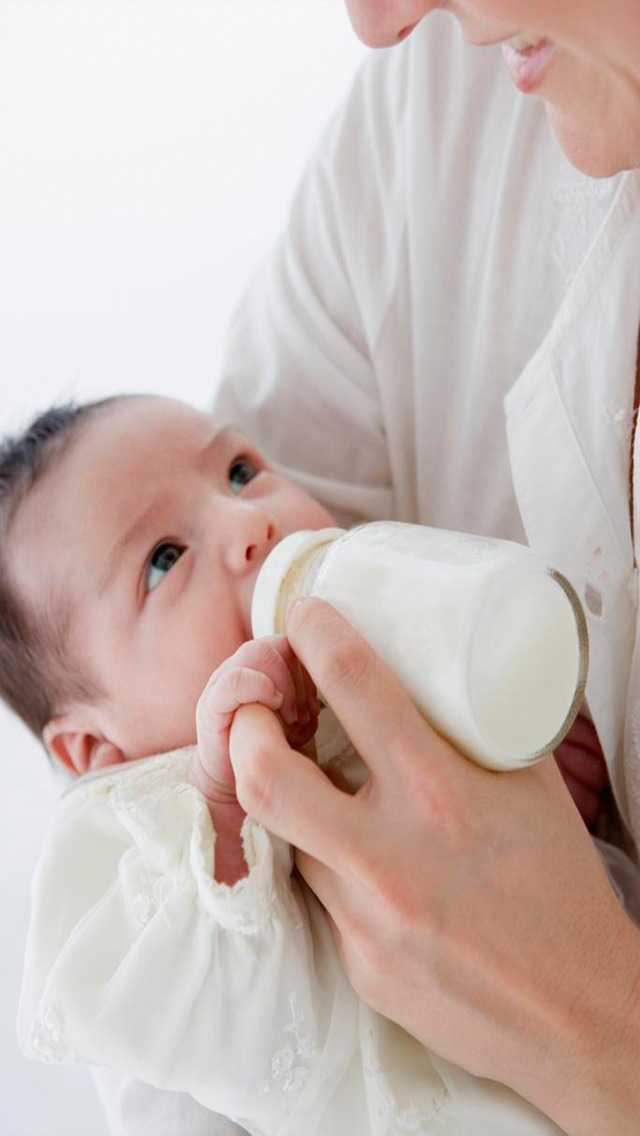
Can you Freeze Cauliflower Puree For Baby
Yes. You can freeze the cauliflower puree for your baby for up to 2-3 months. The longer it sits some texture and taste changes will start to take place.
How Long To Steam Cauliflower For Baby
Depends on the the size of cauliflower florets. For medium 2 inch florets – about 5 to 6 minutes. It should be cooked until tender but still firm enough to keep its integrity.
Is Cauliflower Good For Constipation In Babies?
Due to its high soluble fibre content cauliflower might help with baby constipation. For best results try to mix with some prune puree. Some babies though have a problem with complex sugars contained in cruciferous vegetables so they may find it harder to digest.
What If My Baby Doesn’t Like Cauliflower
Sneak into other purees, finger foods and try to roast it instead of steaming, it tends to taste better. And don’t give up, offer it multiple times and show it by example.
And don’t give up, offer it multiple times and show it by example.
Cauliflower For Baby Ways To Cook & Serve (Puree & Baby Led Weaning)
ThrivingNest
You can start serving cauliflower to your baby at around 7-8 months of age. Cook until tender by steaming, roasting or boiling. Serve whole florets, riced or pureed by itself or incorporated in other baby foods. If it's causing discomfort, wait until your baby is a little older before introducing again.
Print Recipe Pin RecipeDIETS: Vegan
Prep Time 7 mins
Cook Time 8 mins
Roasting Time 35 mins
Course Side Dish
Cuisine Baby Food
Servings 10
Calories 5.3 kcal
- 1 small head of cauliflower (remove the florets)
- 2 tbsp avocado oil (if roasting)
- 1/3 tsp sea salt (for older kids)
Remove the stalk, then start removing the florets by cutting each cluster from the core, leaving a little of the stem with each cluster.
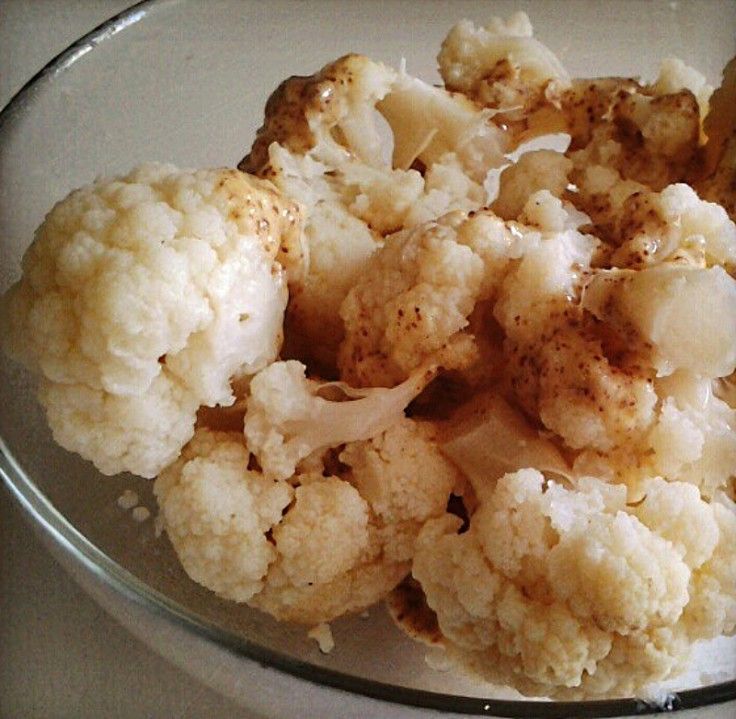 Divide into smaller florets if you need smaller pieces.
Divide into smaller florets if you need smaller pieces.
Steaming Cauliflower
Add enough water to a pot and bring to a boil ( it should not touch the steamer basket when it is placed in the pot).
Place the steamer basket with cauliflower pieces over the pot. Cover and cook for 6 to 9 minutes until tender when pierced with a fork. Cooking time will depend on the size of the florets.
Roasting/Baking Cauliflower
Place the cauliflower on a baking sheet in a single layer. Drizzle some oil on top and season with some sea salt (optional).
Roast cauliflower in the preheated oven at 425F / 220C, for 35-40 minutes.
Boiling Cauliflower
Boiling is the same as steaming, but this time you drop the cauliflower in the pot covered with water and boil for approximately 10 minutes or until tender. Keep in mind, the most nutrients will leach into the boiling water. This method is best when you make soups and purees as you would keep the water with all the leached nutrients.

Cauliflower Puree Stage 1
After baking, roasting or steaming, you just take the cooked cauliflower, mash or puree the cauliflower in a blender until smooth. Add water as needed to reach the desired consistency. No salt or spices needed.
Cauliflower Puree Stage 2
Same procedure as with stage 1 but you can make a thicker texture, mix with other purees and serve larger portions. See puree combinations in the notes below.
- For even cooking, ensure that the cauliflower florets are assembled in a single layer or evenly distributed in the steam basket.
- Do not overcook cauliflower. Overcooking will turn it mushy, lose its color, change its taste, and will lose lots of nutrients.
- The perfectly cooked cauliflower should have a crisp-tender texture.
- If roasting cauliflower try to use healthier, high smoke point oils like avocado oil or grape-seed oil.

Cauliflower Puree Combinations:
- Cauliflower and apple (applesauce) or pear
- Cauliflower, prune and avocado
- Cauliflower and butternut squash
- Cauliflower and chicken puree
- Cauliflower chickpea and corn
- Cauliflower and carrot
- Cauliflower and avocado and banana
- Cauliflower and pumpkin or squash
- Cauliflower and potato or sweet potato
- Cauliflower and salmon
- Cauliflower and zucchini
Calories: 5.3kcalCarbohydrates: 0.9gProtein: 0.4gFat: 0.1gPotassium: 32.7mgFiber: 0.6gSugar: 0.5g
Have you tried any of these recipes? Your feedback is really helpful, please rate and leave a comment below recipe card!!
Disclaimer: The information, including but not limited to, text, graphics, images and other material contained on this website are for informational purposes only and not intended for medical advice.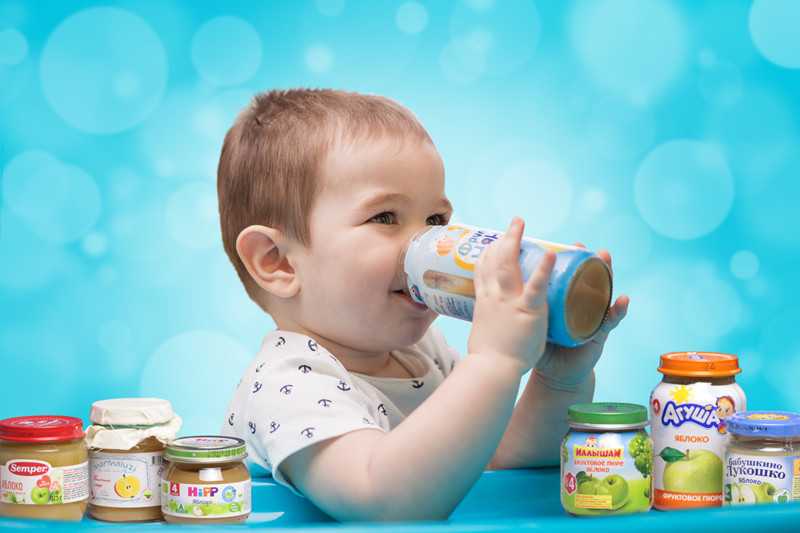 Please refer to my full disclaimer for more info.
Please refer to my full disclaimer for more info.
©ThrivingNest. Content and photographs are copyright protected and need prior permission to use. Copying and/or pasting full recipes to other websites and any social media is strictly prohibited. Sharing and using the link of this recipe is both encouraged and appreciated!
How to Cook Cauliflower for Babies (with recipes)
Jump to Recipe
Cauliflower is a wonderful first food for babies! Here's how to cook and serve it to your baby along with easy and nutritious recipes for 6 months and up.
Jump to:- When can babies eat cauliflower?
- Health benefits
- Cooking Methods
- Cauliflower Rice
- Cauliflower Puree Combinations
- How to cut for baby led weaning
- Frequently Asked Questions
- Baby-Friendly Cauliflower Recipes to try
- How to Cook Cauliflower for Babies
When can babies eat cauliflower?
This nutritious, super versatile vegetable can be offered to babies as soon as they’re ready to start solids, usually around 6 months.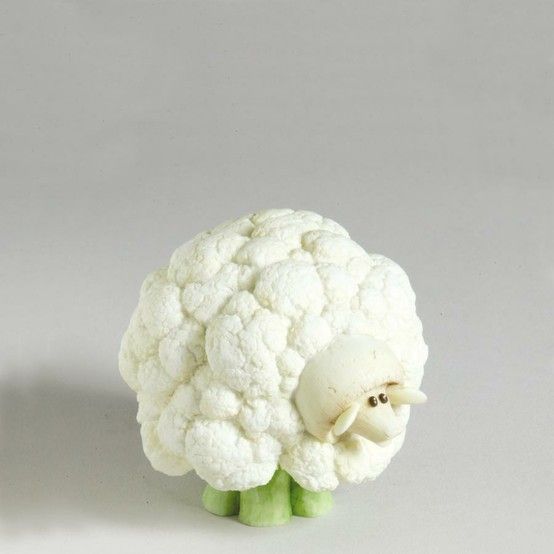 It’s important to remember that your baby is unique and that rather than going by the calendar, you need to make sure your baby is DEVELOPMENTALLY ready to start solids.
It’s important to remember that your baby is unique and that rather than going by the calendar, you need to make sure your baby is DEVELOPMENTALLY ready to start solids.
If you’re unsure, be sure to grab my FREE handout!
Health benefits
Cauliflower is a cruciferous vegetable that belongs to the Brassicaceae family, along with broccoli, kale, and cabbage.
It contains many nutrients, like iron, calcium, zinc, and B vitamins, but it is particularly high in fiber, vitamin C and K. Vitamin C helps enhance the absorption of plant-based iron considerably!
While the most common variety is white, it comes in several other colors - Green purple, and orange.
They contain similar vitamin and mineral content and are are all wonderful to introduce to your baby. They have a similar mild flavor. Where they differ is their antioxidant profile.
The orange-fleshed ones are rich in carotenoids whereas the purple varieties are rich in anthocyanins. The green cauliflower, also known as broccoflower or romanesco, contains chlorophyll.
Cooking Methods
Here are the two best cooking methods for babies. It's VERY important that the vegetable is cooked until soft enough to be easily pierced with a fork.
I personally don't recommend roasting for this age as the exterior of the vegetable can get too crispy or even burnt before it softens. You can boil, but I don't recommend it as most of the nutrients will leach into the water.
In regards to size, cut into large florets. If they are especially large, you can slice in half vertically. Once cooked, you can cut into smaller pieces depending on your baby's age. This way you can serve both big and small pieces as suggested below.
Steamed Cauliflower
Place water in a pot, add steamer basket, and bring to a boil. Add broccoli, cover, reduce heat to medium, and cook for 8-10 minutes. It should be easily pierce-able with a fork.
Steam Roasted Cauliflower
This method is my personal favorite! If you are new to this cooking method, you will be amazed by how easy it is and how flavorful your cauliflower (or any vegetable) turns out!
How it works: The hot oven and moisture from the veggies create steam (once covered) making them soft, but because they’re roasted, the flavors become more concentrated.
- Simply add cauliflower to a baking pan, toss with oil and seasoning(s) of choice.
- COVER, and roast at 425°F for 15-20 minutes! Perfectly soft and flavorful!
Learn more about steam roasting as well as cooking times for ALL other vegetables
Cauliflower Rice
- Cut the cauliflower into 1 to 2-inch florets. Add to a food processor/blender. Work in batches if making a lot so that you don't end up over-processing.
- Pulse until small pieces form. Stop periodically and scrape the sides.
- Heat a pan over medium-high heat. Add butter or oil. Saute the rice for about a minute or so, add a splash of water. Cover, and cook for 5-8 minutes, until cauliflower is tender.
- Enjoy!
Due to its neutral flavor, cauliflower rice can be enjoyed in so many ways! You can serve the "rice" as is or fold into foods like:
- Sauces/dips
- Homemade baby oatmeal
- Baked Quinoa - a great alternative to oatmeal
- Lentils
- Overnight oats/quinoa
- Yogurt
- Vegetable omelette
Cauliflower Puree Combinations
If you desire a completely smooth texture, add the cooked cauliflower (using any of the methods above) to a food processor or blender along with breastmilk/formula, water, or broth. Blend until desired consistency is reached.
Blend until desired consistency is reached.
Here are some other foods to combine with:
- Applesauce
- Avocado
- Banana
- Beans
- Beets
- Butternut Squash
- Carrots
- Chicken
- Sweet Potato
- Tofu
- Zucchini
How to cut for baby led weaning
For 6-8 months old:
Bigger is better and safer at this age so they can easily grab the food with their palm and bring to mouth.
If you are feeling nervous, you can absolutely start with puree or soft-cooked cauliflower rice. Always do what feels right to you!
9+ months old:
As your baby develops their pincer grasp and is able to pick up small pieces of food using their thumb and finger, you can cut into small, bite-sized pieces. I still suggest continuing to offer larger pieces so they can practice taking bites.
This is a good time to introduce utensils. Your baby will most likely just play around or toss it. But it's still great for exposure! Continue role modeling too.
But it's still great for exposure! Continue role modeling too.
12+ Months old:
Depending on your child's chewing skills and your comfort level, you can start to offer slightly firmer, but still soft-textured foods. Try shortening the cooking time by several minutes and see how your baby does.
Continue offering utensils and your child will likely surprise you one day!
Frequently Asked Questions
How can I select the best cauliflower at the store?
Choose one that has no brown spots, is firm and heavy for its size with densely packed florets. You can use colored cauliflower as well. Just make sure it's uniformly colored.
When you get home, take it out of its usual cellophane to prevent molding. Transfer to a bag with paper towel to absorb any excess moisture.
How should I season cauliflower for babies?
The beauty of cauliflower is that, just like tofu, it soaks up seasoning like no other! Curry powder, cumin, garlic, turmeric, ginger. ..have fun exploring the exquisite world of herbs and spices with your baby!
..have fun exploring the exquisite world of herbs and spices with your baby!
Does cauliflower make baby gassy?
Foods that are rich in fiber tend to cause gas, but you shouldn't eliminate them completely!
These foods offer so many beneficial nutrients, necessary for your baby’s growth and development. Not to mention, early introduction to a wide variety of flavors and textures is key in minimizing picky eating down the road.
If your baby is gassy but doesn't seem to be in discomfort, there's no reason to worry. If your baby is extra gassy after eating certain foods, just don't overload them with those foods.
Baby-Friendly Cauliflower Recipes to try
Dips
- Creamy roasted cauliflower dip
- Cauliflower cashew alfredo
Main Meals
- Indian spiced roasted cauliflower
- Creamy vegan cauliflower chickpea soup
- Vegetarian sweet potato lasagna
- Vegan African peanut stew
- Cauliflower buns
Did you make this recipe? Leave a rating below and let me know how you liked the recipe! Your feedback means so much to me!
How to Cook Cauliflower for Babies
Cauliflower is a wonderful first food for babies! Here's how to cook and serve it to your baby along with easy and nutritious recipes for 6 months and up.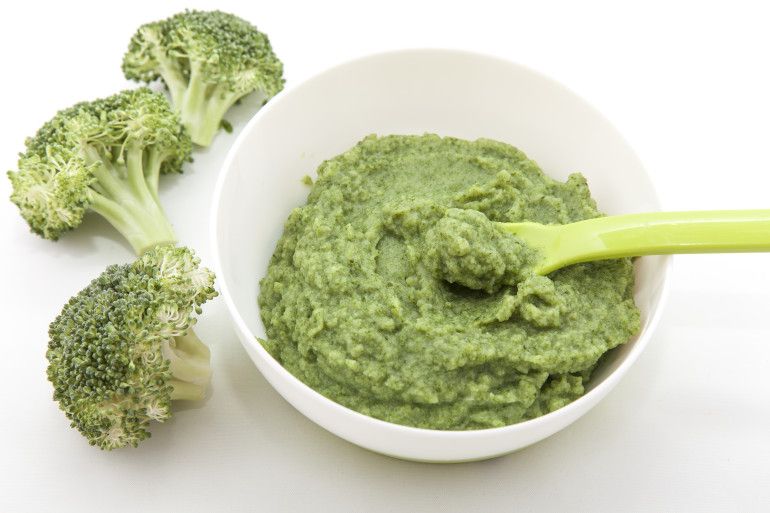
4.67 from 3 votes
Print PinPrep Time: 5 minutes
Cook Time: 15 minutes
Total Time: 20 minutes
Servings: 8
Author: Min | MJ and Hungryman
- ▢
Steamer
- ▢
Baking Mat
- ▢ 1 pound cauliflower, chopped into florets
- ▢ 2 tablespoons avocado oil (for steam roast)
- ▢ herbs/seasonings of choice (optional but highly recommended)
Steam
Cut cauliflower into large florets.
Add water to a pot and insert the steamer basket. The surface of the water should be under the basket. Pour some out if need be.
Bring the water to a boil. Add cauliflower, cover the pot, and reduce the heat to simmer. Cook for about 8-10 minutes, or until easily pierce-able with a fork.
Steam roast
Preheat oven to 425° Fahrenheit. Cut cauliflower into large florets and place on a baking pan.
Toss the cauliflower with oil and herbs/seasonings of choice.
 It's ok if they overlap. It will create more steam, resulting in softer texture.
It's ok if they overlap. It will create more steam, resulting in softer texture.Cover with foil or silicone baking mat.
Place in the oven and cook for 15-20 minutes until soft.
Cauliflower rice
Cut the cauliflower into 1 to 2-inch florets. Add to a food processor/blender. Work in batches if making a lot to avoid over-processing.
Pulse until small pieces, about the size of rice, form. Stop periodically and scrape the sides. Heat a pan over medium-high heat.
Add butter or oil. Saute the rice for about a minute or so, add a splash of water. Cover, and cook for 5-8 minutes, until cauliflower is tender.
To store:
Transfer to an airtight container and keep in the fridge for up to 5 days. These won't freeze well. If you have a lot of leftovers and want to invite more variety, add them to the recipes I suggest.
Because the florets are so soft, reheating will only make them mushier. Serve straight from the fridge or allow to come to room temperature.
Calories: 45kcal | Carbohydrates: 3g | Protein: 1g | Fat: 4g | Sodium: 17mg
Course Side Dish
Cuisine American
Tried this Recipe? Tag me Today!Tag me @KidFriendly.Meals today!
3 First Food Recipes
Cauliflower is rich in phytochemicals that help prevent cancer. Cauliflower also contains vitamin A, vitamin C and even calcium. Read on to find out when to introduce cauliflower into baby food and how to prepare cauliflower for your baby's first feeding.
Read also: How to cook meat for feeding: 3 recipes for babies
Allergy to cauliflower in babies is extremely rare, however, despite this, it is not recommended to use it as the first vegetable for feeding. This is due to the fact that, as with broccoli, it can cause increased gas formation in infants.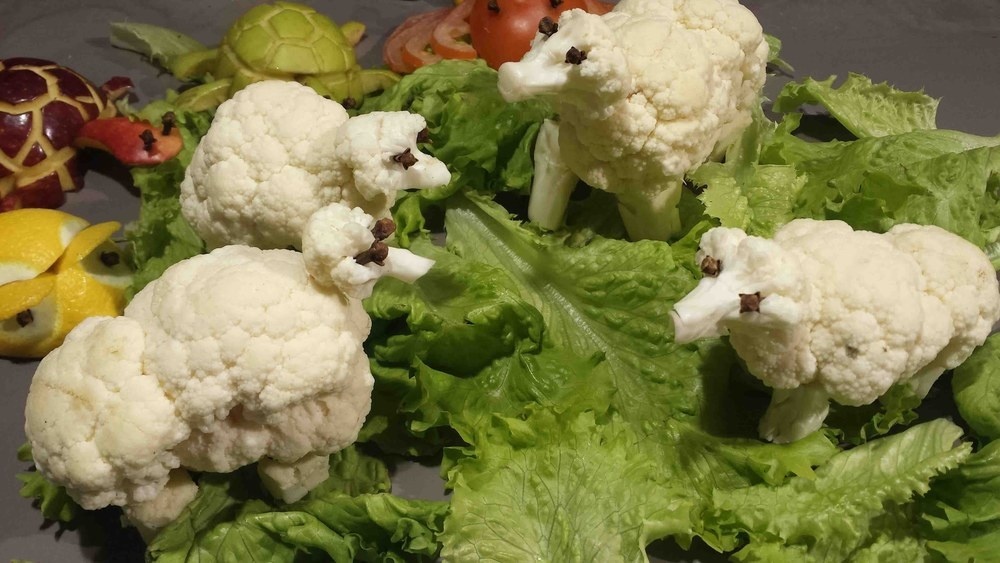 If the child did not have problems with digestion, then you can introduce mashed cauliflower at 6-8 months. Otherwise, it is better to wait up to 8-10 months. nine0005
If the child did not have problems with digestion, then you can introduce mashed cauliflower at 6-8 months. Otherwise, it is better to wait up to 8-10 months. nine0005
Earlier we wrote about how to cook broccoli for the first feeding, and today we will tell you how to cook cauliflower for feeding babies.
How to cook cauliflower for baby food
The best way to cook cauliflower for baby food is not to boil it, but to steam it.
Steaming cauliflower retains most of the nutrients. Baked or boiled cauliflower are also cooking options. nine0005
Purebred for infants
Ingredients:
1 Color Cabbage
How to prepare:
Step 1: Wash cauliflower under cold water.
Step 2: Remove green leaves to reach florets.
Step 3: Break the inflorescence into small pieces; use only the florets for mashed cauliflower for the first feeding. This will give you a smoother, smoother puree. Steam until soft. nine0005
This will give you a smoother, smoother puree. Steam until soft. nine0005
Step 4: Place the cooked cauliflower in a blender and puree until smooth.
Step 5: Add water as needed to achieve a smooth, tender consistency.
Read also: How to feed carrots: carrot puree for babies
Cauliflower, potato and zucchini puree for babies
Ingredients:
2 potatoes;
1 zucchini; nine0005
1 cup cauliflower
How to cook:
Step 1: Peel the vegetables and cut into small pieces.
Step 2: Steam vegetables in a steamer or in a basket over a pot of boiling water.
Step 3: Puree the vegetables with a blender, using a little water to get the right consistency (usually 1-2 tablespoons is enough).
You can also use breast milk (or formula if formula-fed) to mix into the puree.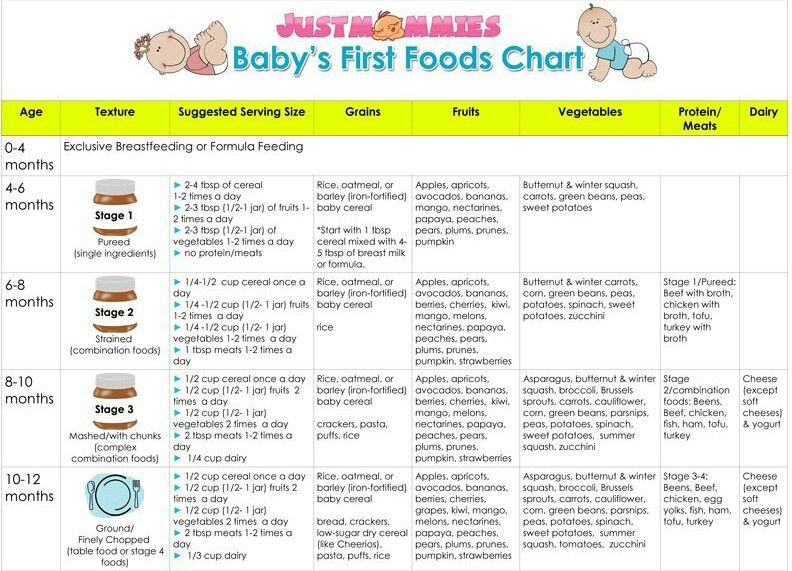 nine0005
nine0005
Cauliflower and Broccoli Baby Puree
Ingredients:
- 50g broccoli, washed and cut into small florets: 9061
- 50 g cauliflower, washed and cut into small florets:
- some breast milk or formula.
How to cook:
Step 1: Place the broccoli and cauliflower in the steamer and cook for about 10 minutes until tender. nine0005
Step 2: Puree the vegetables until smooth, adding a little steamer water or breast milk (formula if your baby is formula-fed) to puree the desired consistency.
Step 3: Broccoli and cauliflower mix well with carrot or sweet potato mashed vegetables.
Now you know how to prepare cauliflower for the first feeding. You can find more recipes for baby puree at the link below. nine0005
Read also: Fish puree from broccoli and potatoes for children up to a year
Read also: How to freeze vegetables for feeding for the winter
Read also: Fermented milk products: the whole truth from Dr. Komarovsky
Komarovsky
Cauliflower puree for babies recipe
Young mothers always worry when it comes to introducing a baby to a new food product. The main fear is not knowing what puree to cook for the first feeding. At the same time, the first dish of the baby should be not only tasty, but also as useful as possible. Therefore, pediatricians often recommend boiling cauliflower as the first adult food for a child. But from what age is a child allowed to give this product? How much to cook mashed cauliflower for babies? We will analyze the recipe for the best complementary foods and the beneficial properties of this vegetable together today. nine0005
What are the health benefits of cauliflower?
Vegetables in the infant's diet should form the main part of the diet. And since cauliflower is a storehouse of useful vitamins and minerals, it is necessary to cook it and include it in the children's diet.
Content of useful components:
- proteins;
- dietary fiber;
- calcium, sodium, iron, copper, potassium and phosphorus; nine0105
- vitamins of group B, as well as A, U, E, PP, D, K, C;
- citric, folic, tartronic, malic and Omega-3 acids;
- biotin;
- fiber;
- starch;
- and in the content of ascorbic acid it surpasses even the white-headed vegetable.

The benefits of the rich vitamin composition are as follows:
- Complementary food from cauliflower has a beneficial effect on the digestion of crumbs, promotes the development of beneficial microflora in the intestines, and restores the mucous membrane. nine0105
- This healthy vegetable helps to eliminate toxins from a small body, improves intestinal motility.
- Complementary food from cauliflower helps to strengthen blood vessels and improves the functioning of the cardiac system.
- Contributes to the normal development of the nervous system of the baby.
- Due to its iron content, cauliflower is a good prevention of iron deficiency.
- Cabbage complementary food is an excellent prevention of cancer and inflammatory processes. nine0105
- Strengthens the immune system.
- Promotes cell regeneration.
Like broccoli, cauliflower is easily absorbed by the baby's body, does not provoke colic, bloating and flatulence. The baby after cabbage feeding remains calm, cheerful, full. Allergic reactions from cauliflower are rare. Therefore, it is quite safe to include this vegetable in the children's diet. But still, it is worth considering some of the negative aspects of cauliflower. nine0005
The baby after cabbage feeding remains calm, cheerful, full. Allergic reactions from cauliflower are rare. Therefore, it is quite safe to include this vegetable in the children's diet. But still, it is worth considering some of the negative aspects of cauliflower. nine0005
What harm?
If it is reasonable to approach the introduction of the first complementary foods for babies, cauliflower inflorescences will not harm the child. But if the baby daily consumes this vegetable, and even in large quantities, then such reactions may appear:
- severe allergies in the form of itchy rashes, redness;
- heartburn from hyperacidity of gastric juice;
- enlargement of the thyroid gland;
- inflammatory bowel disease; nine0105
- impaired renal function.
The first rule of complementary foods for a baby is not to overdo it. It is worth remembering this, no matter what safe product you introduce into the children's diet.
How and when to introduce cauliflower into the baby's diet?
Cabbage complementary foods can be introduced as early as 4 months of age for artificial babies and from six months for children who are breastfed. Cauliflower puree is easily absorbed by the baby's body, which cannot be said about white cabbage. nine0005
Cooking cauliflower puree is most useful for children who have frequent constipation and anemia. If the baby is faced with the problem of weight gain, acquaintance with cauliflower should be postponed until later, when the child is already familiar with cereals - from about 7 months you can return to this vegetable.
The first puree of cauliflower is given in the amount of ½ teaspoon. A day later, the volume of the portion is increased by 2 times. However, all this time it is necessary to observe whether an undesirable reaction of the child's body to the "curly" vegetable has appeared. If the benefits of cauliflower are obvious, you can continue to increase the serving of complementary foods to the recommended amount:
- age 6 months - 100 g;
- 7 months old - 150 g;
- 8 months old - 180 g;
- age 9-12 months - 200 g.

A few drops of olive oil can be added to baby cauliflower puree. But this should be done 2 weeks after the first acquaintance of the baby with the vegetable. If, after cabbage feeding, the baby feels discomfort in the gastrointestinal tract, this vegetable should be discarded. In this case, you can try to cook crumbs of broccoli. nine0005
Recipe for delicious cauliflower puree for babies
Cauliflower cooks quite quickly. However, before you start cooking a vegetable, it must be soaked in cold, previously boiled water for 3-4 hours. So you get rid of possible nitrates that unscrupulous farmers fertilized the plant.
For the simplest baby puree, you will need 50 g of cauliflower and 2-3 tablespoons of water, formula or breast milk. Having disassembled the vegetable into inflorescences, it must be thoroughly washed. Dip the flowers in water that has boiled. How long will it take to cook cauliflower for babies? A maximum of 20 minutes until the vegetable is soft, but it should not turn into porridge.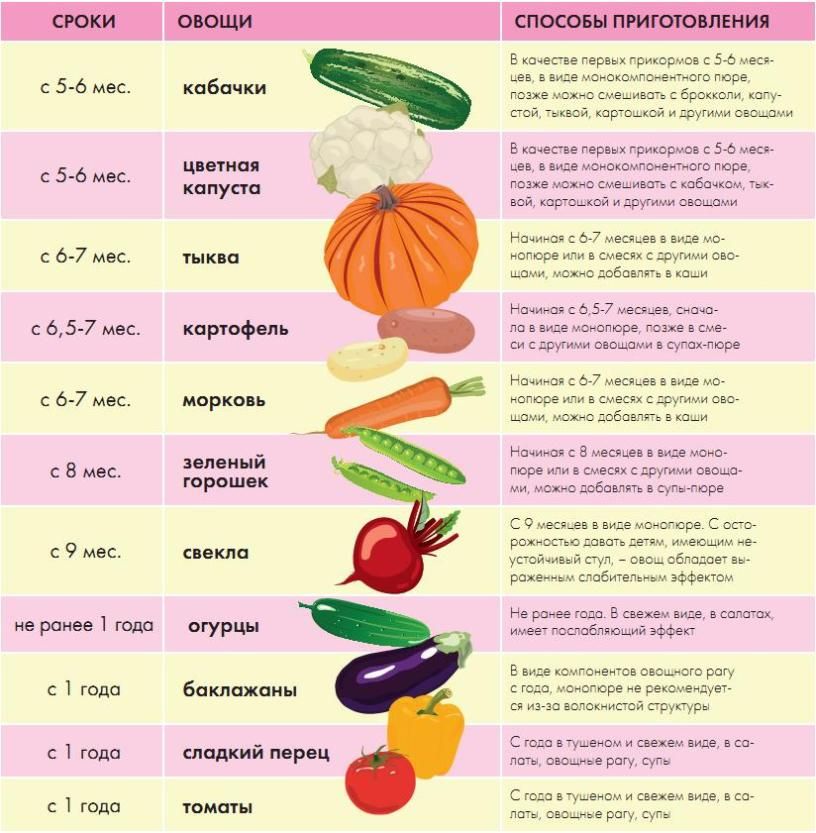 Then put the inflorescences in a bowl and beat with a blender to a state of a monotonous slurry. Be sure to dilute the puree with breast milk, infant formula, or water. nine0005
Then put the inflorescences in a bowl and beat with a blender to a state of a monotonous slurry. Be sure to dilute the puree with breast milk, infant formula, or water. nine0005
Cauliflower is boiled in a double boiler as follows: water is poured onto the lower tier, and vegetable inflorescences are laid on the upper tier. Boil cabbage in this way for up to 15 minutes, after which the cabbage is turned into a puree state, diluted with water or mother's milk. Such a dish retains nutrients to the maximum.
In the microwave, cauliflower is prepared as follows: the inflorescences are placed in a glass dish, poured with boiled water, covered with cling film and cooked for 5-7 minutes at full power of the device. Next, mashed potatoes are prepared by analogy with previous recipes. nine0005
The recipe for a simple cauliflower puree can later be supplemented with an egg (in particular, the yolk), butter, broccoli, potatoes, zucchini and other vegetables. Adding salt to baby food is not recommended.




